ABOVE: The annual BSAOC Triples Ride meets in front of Rabers before taking off through the hills above San Jose.
BSAOC Triples Ride
BSA ROCKET 3’s & TRIUMPH TRIDENTS RIDE TOGETHER
The BSAOCNC (The BSA Owners Club of Northern California) sponsors about one fantastic ride every month throughout the year. Some are themed rides (Rigid Ride, Dual Sport Ride, Singles Ride, etc.) and some are just great rides. Actually, they’re all great rides, but some are themed. The BSAOC Triples Ride is one example. This annual event starts at Rabers in San Jose, then winds up Mount Hamilton Road all the way up to Lick Observatory (which has one of the world’s largest refractor telescopes at 36 inches in diameter) and beyond. Quite a fine collection of British Triples met up for the ride. 13 Triumph Tridents and BSA Rocket 3 made the ride. Check out the photos of some of them at the bottom of this page.
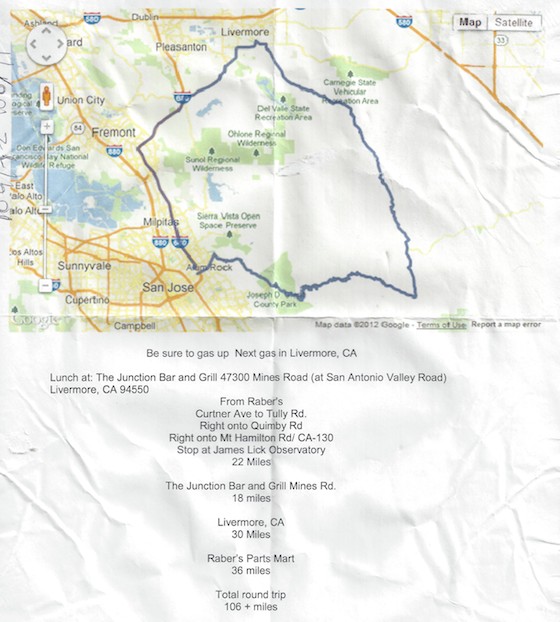
BSAOC TRIPLES RIDE
1100 CURVES IN 27 MILES
Mount Hamilton Road between San Jose and Lick Observatory is one long chain of hairpins and switchbacks. It’s said that there are 1100 curves in just 27 miles. I rarely got out of second gear. Beyond the Observatory, the road straightened out slightly, but still had plenty of twisties. We took this road up to The Junction, a remote restaurant and bar near Highway 580, but well out in the boonies. From there, it was on to the Livermore Wine Country via Mines Road, also loaded with curves. This 106-mile loop ended with a short freeway romp back to San Jose. To get this many people on this many classic bikes from one place to another, safely and altogether, takes organization & BSAOCNC has this in abundance.
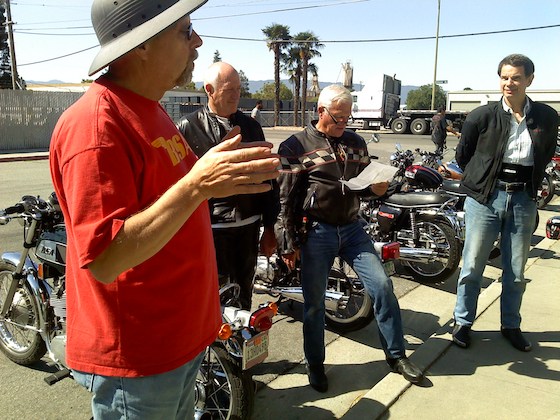
BSAOC TRIPLES RIDE
RIDING TO THE TOP OF THE WORLD
After a seemingly endless chain of tight curves, the BSAOC Triples Ride arrived at Lick Observatory, once the world’s foremost such facilities. Owned and operated by UC Berkeley, it is home to what was once the world’s largest refractor telescope. The 36-incher is still one of the world’s largest. The entire mountain top is dotted with dozens of smaller observatory domes also. From this lofty perch, the entire San Francisco Bay Area spreads out below us, offering a spectacular view. We really are on top of the world.
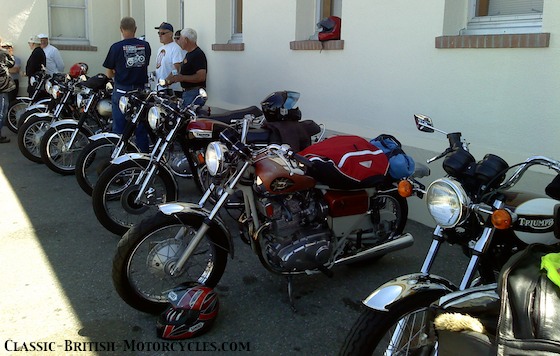
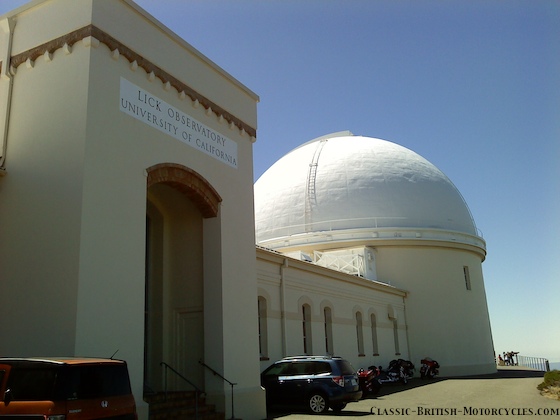
BSAOC TRIPLES RIDE
LUNCH AT THE JUNCTION
After a short break at the Lick Observatory, we were back on the road, heading further into the hills past Mount Hamilton. Our destination is The Junction, a quaint back country bar and grille that seems to cater mostly to bikers and hunters, judging by the stuff hanging on the walls. The food was excellent, the beer cold (I think I was the only one having a beer) and the company superb. After a brief respite, we were on to the next leg of our ride, down Mines Road into the Livermore wine country. After weaving through Tesla Valley with all its many vineyards and wine tasting venues, the rest of the group headed on to San Jose, where we started. Since I live in Pleasanton, I peeled off at Livermore and headed for home. But what a ride. 106 miles of some of the most challenging, and curvy riding I’ve ever done. So challenging in fact that I laid my Harley down on one of the tighter left-handers. Bent my shifter, dented my tank, scratched my windshield, gouged my clutch cover, and wacked my knee pretty good. But all is well that ends well. All in all, it was a helluva ride.

BSAOC TRIPLES RIDE
SO LET’S SEE SOME TRIPLES, ALREADY!
This site being primarily a site about Classic British Motorcycles, and appreciation of same, its only appropriate to feature some of the cool bikes on the ride. I have a particular love for Triumph Tirdents and their sister bikes, the BSA Rocket 3. I think they are extraordinarily cool and unique, and represented the British Motorcycle Industry’s best attempt at market dominance at the close of the 1960s. These really were the first modern multi-cylinder motorcycles, hitting the market months before Honda’s game-changing 750 four cylinder. They accounted well for themselves on road racing circuits around the world also, although they never faired nearly as well in the showroom. Sales were always low, quality was usually an issue, and the price was high for the times. They are also notoriously bad on gas (high fuel consumption), which combined with small capacity fuel tanks, makes for a very short range. But who cares. I love them just the same! And who else but the Brits would come up with a 3-cylinder bike? Yeah sure, Yamaha had one, but they copied the Brits, just like they copied the Triumph Bonneville with their XS650 twin. So, without further ado, here are some glorious British Triples:
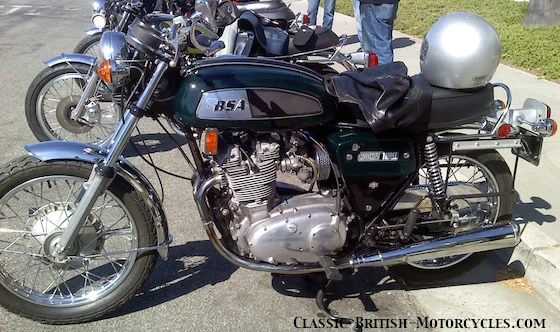
ABOVE: 1971 BSA Rocket 3.
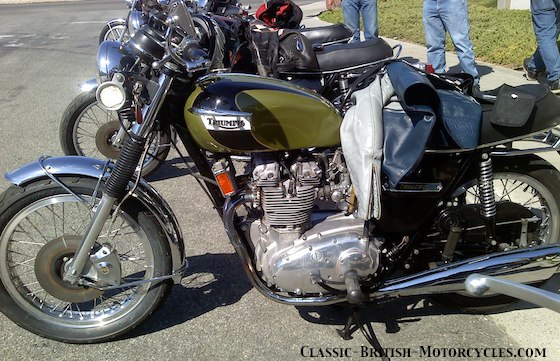
ABOVE: 1973 Triumph T150 Trident.
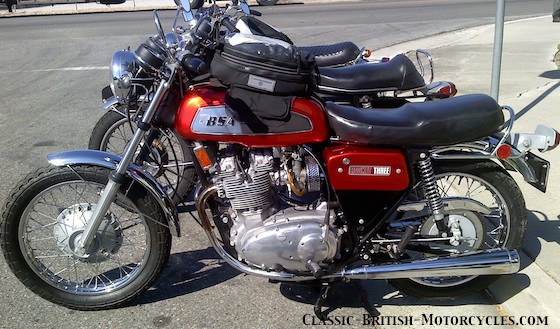
ABOVE: 1971 BSA Rocket 3 with UK-spec “shoebox” gas tank, and black-painted frame.
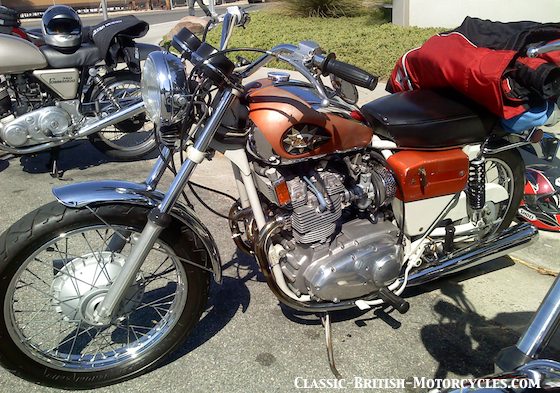
ABOVE: 1971 BSA Rocket 3 with US-spec “teardrop” tank and dove gray frame. No wonder so many people painted them black, eh? Finding an original, unmolested gray-framer is rare these days, and adds to the collector value.
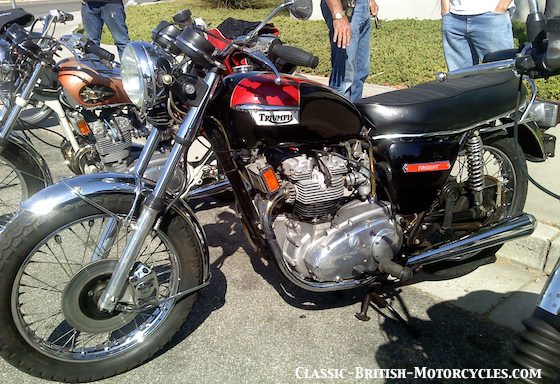
ABOVE: 1974 Triumph T150V Trident in US trim. This would be the last triple with right-shift.
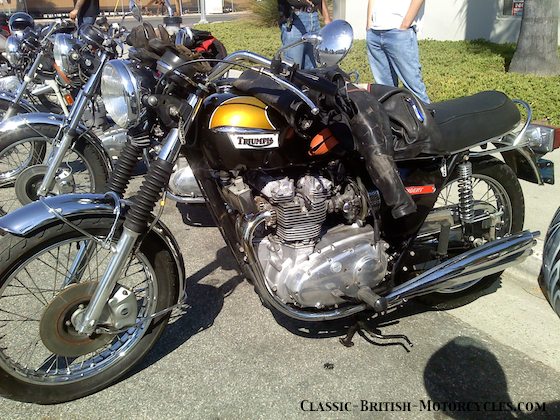
ABOVE: This 1974 Triumph Trident has a set of “Ray Gun” mufflers, which, believe it or not, flowed better than any other pipe.

ABOVE: The 1975 Triumph T160 Trident was a near-complete re-do with forward-canted cylinders (done to clear the new electric starter).
BSA Rocket 3-style) to make room for the new electric starter. Note the shifter on the left. Brake pedal was now on the right side, and the rear drum was replaced with a disk brake. Alas it was the last Trident of the classic era.

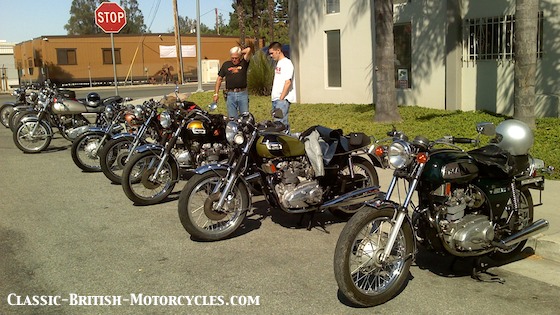

No Comment